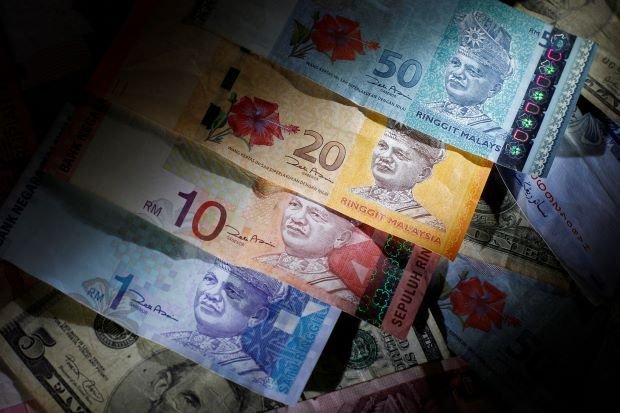Currency exchange rates are an important factor affecting a nation’s economy and trade. The exchange rate is the relative value of one currency when compared to another. There are two types of currency exchange rates: floating and fixed.
The U.S. dollar and other major currencies are floating currencies; their values change according to supply and demand. Fixed currencies are fixed or pegged to another currency and provide benefits to countries who employ them. For example, the Bretton Woods agreement after World War II that pegged European countries’ exchange rates to the U.S. dollar resulted in less currency volatility and stability in international trade relations.
Read on to learn more about exchange rates that are pegged to the U.S. dollar and the reasons for this.
Key Takeaways
- Currency exchange rates are essential to a nation’s economy and can be floating or fixed.
- Fixed currencies are pegged to another currency to maintain stability and competitive trade.
- The Bretton Woods Agreement pegged global currencies to the U.S. dollar, ending in the 1970s.
- Countries peg currencies to the U.S. dollar for economic stability and reduced volatility.
- Many small and emerging economies peg to the U.S. dollar to stabilize and secure their markets.
What Does Pegging Mean?
When countries participate in international trade, they need to ensure the value of their currency remains relatively stable. Pegging is a way for countries to do that. When a currency is pegged, or fixed, it is tied to another country’s currency.
Countries choose to peg their currency to safeguard the competitiveness of their exported goods and services. A weaker currency is good for exports and tourists, as everything becomes cheaper to purchase.
The wider the fluctuations in currencies, the more detrimental it can be to international trade. Many countries, though, chose to maintain a fixed policy, and today, there are still a significant number of currencies pegged to the U.S. dollar.
Important
Countries peg to ensure their goods and services remain competitive instead of being negatively impacted by the constant fluctuation of a floating currency’s exchange rate.
The Bretton Woods System: Origins and Impact
The greenback, as the U.S. dollar is commonly known, was pegged to gold under the Bretton Woods Agreement, as the United States held most of the world’s gold reserves. This system cut back the volatility in international trade relations, as most currencies were pegged to the U.S. dollar. This agreement was ended by then-President Richard Nixon in the early 1970s.
Once the system collapsed, countries were free to choose how their currencies would work in the foreign exchange market. They were able to peg it to another currency, a currency basket, or let the market determine the currency’s value.
Understanding Fixed and Floating Exchange Rates
Today, there are two types of currency exchange rates that are still in existence: floating and fixed. Major currencies, such as the Japanese yen, euro, and U.S. dollar, are floating currencies—their values change according to how the currency trades on foreign exchange or forex (FX) markets.
This type of exchange rate is based on supply and demand. This rate is, therefore, determined by market forces compared with other currencies. Any changes in currency pricing point to strength in the economy, while short-term changes may point to weakness.
Fixed currencies, on the other hand, derive value by being fixed to another currency. Most developing or emerging market economies use fixed exchange rates for their currencies. This provides exporting and importing countries more stability and keeps interest rates low.
Reasons Nations Peg Their Currency to the U.S. Dollar
Countries have different reasons for pegging to the dollar. Most of the Caribbean islands—Aruba, Bahamas, Barbados, and Bermuda, to name a few—peg their currencies to the U.S. dollar because their main source of income is derived from tourism paid in dollars. Fixing to the U.S. dollar stabilizes their economies and makes them less volatile.
In Africa, many countries peg to the euro. The exceptions are Djibouti and Eritrea, which peg their own currencies to the U.S. dollar. In the Middle East, many countries including Jordan, Oman, Qatar, Saudi Arabia, and the United Arab Emirates peg to the U.S. dollar for stability—the oil-rich nations need the United States as a major trading partner for oil.
In Asia, Macau and Hong Kong fix to the U.S. dollar (Macau via pegging to the Hong Kong dollar). China, on the other hand, has been embroiled in controversy about its currency policy. While China does not officially peg the Chinese yuan to a basket of currencies that includes the U.S. dollar, China does manage the exchange rate of yuan to dollars so as to benefit its export-driven economy.
Key Currencies Pegged to the U.S. Dollar
Below is a list of some of the national economies that have pegged to the U.S. dollar:
| Major Fixed Currencies | |||||
|---|---|---|---|---|---|
| Country | Region | Currency Name | Code | Peg Rate | Rate Since |
| Bahrain | Middle East | Dinar | BHD | 0.38 | 1981 |
| Belize | Central America | Dollar | BZD | 2.00 | 1977 |
| Djibouti | Africa | Franc | DJF | 177.72 | 1974 |
| Eritrea | Africa | Nakfa | ERN | 15.07 | 2017 |
| Hong Kong | Asia | Dollar | HKD | 7.83 | 2022 |
| Jordan | Middle East | Dinar | JOD | 0.71 | 1996 |
| Lebanon | Middle East | Pound | LBP | 1,507.5 | 1999 |
| Oman | Middle East | Rial | OMR | 0.38 | 1987 |
| Panama | Central America | Balboa | PAB | 1.00 | 1904 |
| Qatar | Middle East | Riyal | QAR | 3.64 | 1981 |
| Saudi Arabia | Middle East | Riyal | SAR | 3.75 | 1987 |
| United Arab Emirates | Middle East | Dirham | AED | 3.67 | 1998 |
Why Are Currencies Pegged to the USD?
Countries mainly peg their currencies to the USD for stability. This encourages trade with the nation as it reduces foreign exchange rate risk and other risks, such as political risk. When a nation pegs its currency to a stronger economy, it allows for the nation to have access to a wider range of markets with a lower level of risk.
What Currencies Are Pegged to the Euro?
Is China’s Currency Pegged?
China’s currency, the yuan, was pegged to the U.S. dollar from 1994 to 2005. The currency is now carefully managed by the country, and allowed to float within a narrow band; however, it is not a free-floating currency like most other currencies.
The Bottom Line
It makes sense for many small nations to fix their currency to the U.S. dollar, especially if the primary source of revenue comes in the form of the dollar. This pegged strategy helps stabilize and secure small economies that might otherwise be unable to withstand volatility.
Conversely, large and growing economies that usually don’t have trouble with currency volatility typically maintain floating rate currencies. Their exchange rates move according to supply and demand rather than other currencies.







